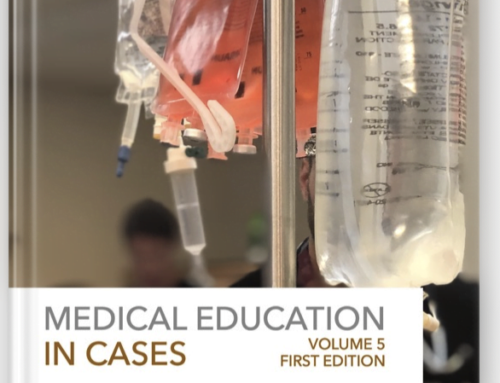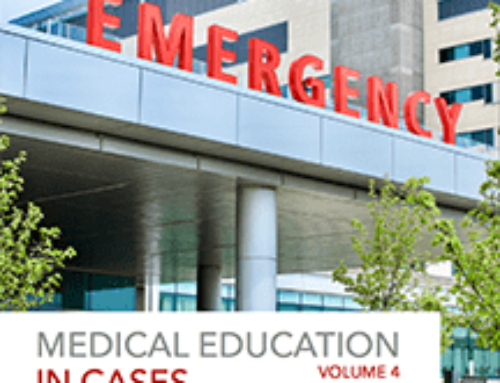 Welcome to season 3, episode 2 of the ALiEM Medical Education in Cases (MEdIC) series! Our team (Brent Thoma, Sarah Luckett-Gatopoulos, Tamara McColl, Eve Purdy, and Teresa Chan) is pleased to welcome you to our online community of practice where we discuss difficult medical education cases each month. As usual, the community discussion will be reviewed using qualitative research methods to produce a curated summary that will be combined with two expert responses to create a functional teaching resource.
Welcome to season 3, episode 2 of the ALiEM Medical Education in Cases (MEdIC) series! Our team (Brent Thoma, Sarah Luckett-Gatopoulos, Tamara McColl, Eve Purdy, and Teresa Chan) is pleased to welcome you to our online community of practice where we discuss difficult medical education cases each month. As usual, the community discussion will be reviewed using qualitative research methods to produce a curated summary that will be combined with two expert responses to create a functional teaching resource.
This month’s case features a problem that many of us have seen in our day-to-day practice: a patient with a strict no learner policy who refuses to be assessed by anyone other than the attending physician. With much of the care in teaching hospitals delegated through fellows, residents, and medical students at various stages of training, how would you address this problem? Please read the case and join in the discussion below!
MEdIC Series: The Concept
Inspired by the Harvard Business Review Cases and initially led by Dr. Teresa Chan (@TChanMD) and Dr. Brent Thoma (@Brent_Thoma), the Medical Education In Cases (MEdIC) series puts difficult medical education cases under a microscope. On the fourth Friday of the month, we pose a challenging hypothetical dilemma, moderate a discussion on potential approaches, and recruit medical education experts to provide “Gold Standard” responses. Cases and responses are be made available for download in PDF format – feel free to use them! If you’re a medical educator with a pedagogical problem, we want to get you a MEdIC. Send us your most difficult dilemmas (guidelines) and help the rest of us bring our teaching to the next level.
The Case of the Patient with a No Learner Policy
by Drs. Andrew Petrosoniak (@petrosoniak) and Nikita Joshi (@njoshi8)
John, a first year emergency medicine (EM) resident, walks slowly back the physician charting area in the emergency department. He had just spent 5 minutes attempting to gather a history and perform a physical exam on Mrs. Armstrong, a 73 year old lady with a history of COPD who presented with dyspnea. Except, it didn’t go as planned and now he had to explain to his attending why he couldn’t continue.
The attending physician, Dr. Brown, looks up from his charting at John, “Back already? That was fast!”
John explained, “Well, Mrs. Armstrong wouldn’t let me continue the history and physical when she found out I was only a resident doctor. Everything was great until she saw that my badge said ‘PGY-1 Emergency Medicine’” She got upset and refused to answer any more questions. When I asked her what was wrong, she said told me that she wasn’t a guinea pig and didn’t want student doctors practicing on her because she’s been through enough already. She told me she only wanted to speak with a ‘real’ doctor.”
John continued, “I tried to explain to her that I am a physician with an MD degree and that this is a teaching hospital where junior doctors work closely under the supervision of attending physicians, but she wouldn’t listen”.
“Did you tell her that I would hear the story and come meet her shortly? And that all patients are reviewed and examined by an attending physician?” asked Dr. Brown. “In fact, I often tell my patients that it’s more comprehensive to do it this way than if I went in there myself since the story gets told twice with a resident and we spend time thinking and discussing her symptoms, the diagnosis, and the management plan”.
“I mentioned all of these things but she said that she’s seen too many student doctors in her day and now all she wants is a real one” said John. “When she started yelling at me to leave, I figured that it was best to come get you”.
“Did you introduce yourself initially as a resident?” asked Dr. Brown.
“No, I just said, I’m Dr. Callaghan and I work with Dr. Brown, who you’ll be meeting shortly”.
Key Questions
- How should medical students and residents state their level of training during their introduction to a patient?
- What approach should junior physicians or students take when speaking with a patient who does not want to be seen or examined by a “doctor in training”?
- What strategies can be used by medical students and residents to help the patient better understand how a teaching hospital works?
- How should an attending physician approach situations where the patient refuses to see anyone except an attending physician?
Weekly Wrap Up
As always, we will post the expert responses and a curated commentary derived from the community responses one week after the case was published. This time the two experts are:
- Dr. Michael Gisondi (@MikeGisondi), assisted by his medical education fellows, Dr. Abra Fant (@DrAbracadabra) and Dr. Benjamin Schnapp (@Schnappadap) from Northwestern University Feinberg School of Medicine (@NorthwesternEM). Dr. Gisondi is the EM Residency Program Director, Medical Education Fellowship Director, Director of the Feinberg Academy of Medical Educators, and the Chief Strategy Officer of the ALiEM Chief Resident Incubator. In addition to being Medical Education Fellows at Northwestern, Abra studies Healthcare Quality and Safety while Benjamin has an interest in cognitive decision-making.
- Dr. Jennifer Tang (@jctangmd) is an Assistant Clinical Professor at McMaster University, a practicing emergency physician at Hamilton Health Sciences, and a regional investigating coroner. She has also completed a Masters in Health Sciences (Bioethics) through the University of Toronto and serves as the Ontario representative of the Canadian Medical Associations’s ethics committee.
On November 6, 2015 we will post the Expert Responses and Curated Community Commentary for the Case of the Patient with a No Learner Policy. After that date, you may continue to comment below, but your commentary will no longer be integrated into the curated commentary. That said, we’d love to hear from you, so please comment below!
All characters in this case are fictitious. Any resemblance to real persons, living or dead, is purely coincidental. Also, as always, we will generate a curated community commentary based on your participation below and on Twitter. We will try to attribute names, but if you choose to comment anonymously, you will be referred to as your pseudonym in our writing.




